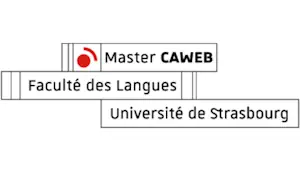Leveraging Chatbots for Better Customer Communication

In today’s fast-paced digital landscape, businesses are constantly seeking innovative ways to enhance customer communication. One technology that has emerged as a game-changer is the chatbot. Chatbots, powered by artificial intelligence (AI), are transforming how companies interact with their customers, offering seamless, efficient, and personalized communication. For businesses aiming to stay competitive, leveraging chatbots is no longer optional—it’s essential. This blog post explores how chatbots revolutionize customer communication, their benefits, implementation strategies, and future trends, all while aligning with the academic and professional focus of the Master CAWEB program at the University of Strasbourg.
What Are Chatbots and Why Do They Matter?
Chatbots are AI-driven software applications designed to simulate human conversation. They interact with users via text or voice, answering queries, providing recommendations, and automating tasks. From simple rule-based bots to sophisticated AI-powered systems, chatbots are versatile tools that cater to diverse industries, including e-commerce, healthcare, education, and more.
The importance of chatbots lies in their ability to bridge the gap between businesses and customers. In an era where consumers expect instant responses, chatbots deliver 24/7 support, reducing wait times and improving satisfaction. For students and professionals in the Master CAWEB program, understanding chatbot technology is crucial, as it intersects with web development, multilingual communication, and user experience (UX) design, core pillars of the program.
Key Benefits of Chatbots for Customer Communication
- 24/7 Availability
Unlike human agents, chatbots operate around the clock, ensuring customers receive assistance at any time. This is particularly valuable for global businesses catering to different time zones. For example, an e-commerce website can use chatbots to handle inquiries about shipping or returns, even during off-hours. - Cost Efficiency
Chatbots reduce the need for large customer service teams, lowering operational costs. According to a 2023 study by Juniper Research, businesses using chatbots saved an average of $0.70 per customer interaction compared to traditional call centers. - Personalized Experiences
Advanced chatbots leverage data analytics and machine learning to offer tailored responses. For instance, a chatbot on a travel website can recommend destinations based on a user’s browsing history, creating a personalized customer journey. - Scalability
Chatbots can handle thousands of conversations simultaneously, making them ideal for businesses experiencing high customer volumes. This scalability ensures consistent service quality during peak times, such as holiday sales. - Multilingual Support
For businesses operating in multilingual markets, chatbots can communicate in multiple languages, aligning with the Master CAWEB program’s emphasis on multilingual web communication. This feature enhances accessibility and inclusivity, catering to diverse audiences.
Implementing Chatbots: Strategies for Success
To maximize the impact of chatbots, businesses must adopt a strategic approach to implementation. Below are key steps to ensure effective integration:
1. Define Clear Objectives
Before deploying a chatbot, businesses should identify their goals. Are you aiming to reduce response times, automate FAQs, or enhance lead generation? Clear objectives guide the chatbot’s design and functionality. For example, a university website might use a chatbot to assist prospective students with application queries.
2. Choose the Right Platform
Chatbots can be integrated into websites, mobile apps, or messaging platforms like WhatsApp and Facebook Messenger. Selecting the right platform depends on where your customers are most active. For Master CAWEB students, this decision ties into web development and UX design, as the chatbot must seamlessly blend with the website’s interface.
3. Design Conversational Flows
A well-designed chatbot mimics natural human conversation. Use conversational UX principles to create intuitive dialogue flows. Avoid overly technical jargon and ensure the chatbot’s tone aligns with your brand. For instance, a luxury brand might opt for a formal tone, while a youth-oriented brand could use a casual, friendly approach.
4. Leverage AI and NLP
Natural Language Processing (NLP) enables chatbots to understand and respond to complex queries. By integrating NLP, businesses can create chatbots that handle nuanced conversations, such as addressing customer complaints or providing detailed product information.
5. Test and Optimize
Continuous testing is critical to chatbot success. Conduct A/B testing to evaluate different conversational flows and analyze user feedback to identify pain points. Optimization ensures the chatbot evolves with customer needs, delivering consistent value.
6. Ensure Human Handoff
While chatbots excel at handling routine queries, complex issues often require human intervention. Design chatbots with a seamless handoff feature, allowing customers to escalate their queries to a human agent when necessary.
Real-World Examples of Chatbot Success
Several companies have successfully leveraged chatbots to enhance customer communication:
- Sephora: The beauty retailer uses a chatbot on its website and messaging apps to offer personalized product recommendations and makeup tutorials. This has led to a 11% increase in conversion rates, according to a 2024 case study by Forrester.
- KLM Royal Dutch Airlines: KLM’s chatbot, BlueBot, handles flight bookings, provides real-time updates, and answers FAQs in multiple languages. This aligns with the Master CAWEB focus on multilingual communication, showcasing how chatbots cater to global audiences.
- Duolingo: The language-learning platform uses chatbots to simulate real-world conversations, helping users practice their skills. This application highlights the intersection of AI and education, a relevant topic for CAWEB students exploring digital learning tools.
Challenges and Solutions
While chatbots offer numerous benefits, they also present challenges. Addressing these ensures a positive customer experience:
- Challenge: Limited Understanding
Basic chatbots may struggle with complex queries, leading to frustration.
Solution: Invest in AI-powered chatbots with NLP capabilities to handle diverse inquiries effectively. - Challenge: Lack of Personal Touch
Customers may perceive chatbots as impersonal.
Solution: Use conversational design to create empathetic, human-like interactions and offer human handoff options. - Challenge: Integration Issues
Poor integration with existing systems can disrupt workflows.
Solution: Work with skilled web developers, such as those trained in the Master CAWEB program, to ensure seamless integration with CRM systems and websites.
Future Trends in Chatbot Technology
The future of chatbots is bright, with emerging trends poised to further enhance customer communication:
- Voice-Activated Chatbots
With the rise of smart speakers and voice assistants, voice-activated chatbots are gaining traction. These bots offer hands-free convenience, appealing to tech-savvy consumers. - Hyper-Personalization
Advances in AI will enable chatbots to deliver hyper-personalized experiences, leveraging real-time data to anticipate customer needs. - Integration with AR/VR
Chatbots integrated with augmented reality (AR) and virtual reality (VR) will create immersive customer experiences, such as virtual product demos. - Ethical AI
As AI ethics gain prominence, businesses will prioritize transparent and unbiased chatbot algorithms, ensuring fair and inclusive communication.
Why Chatbots Matter for Master CAWEB Students
For students in the Master CAWEB program, chatbots represent a dynamic intersection of web development, multilingual communication, and UX design. By mastering chatbot technology, students can create innovative solutions for global businesses, enhancing their employability in digital marketing, e-commerce, and web development.
Conclusion
Leveraging chatbots for better customer communication is a strategic move for businesses aiming to thrive in the digital age. From providing 24/7 support to delivering personalized experiences, chatbots enhance efficiency, scalability, and customer satisfaction. By adopting best practices for implementation and staying ahead of emerging trends, businesses can unlock the full potential of this transformative technology.
Ready to integrate chatbots into your business or academic projects? Explore the possibilities with the Master CAWEB program at the University of Strasbourg, where innovation meets opportunity.
Written by Claude Heumel




